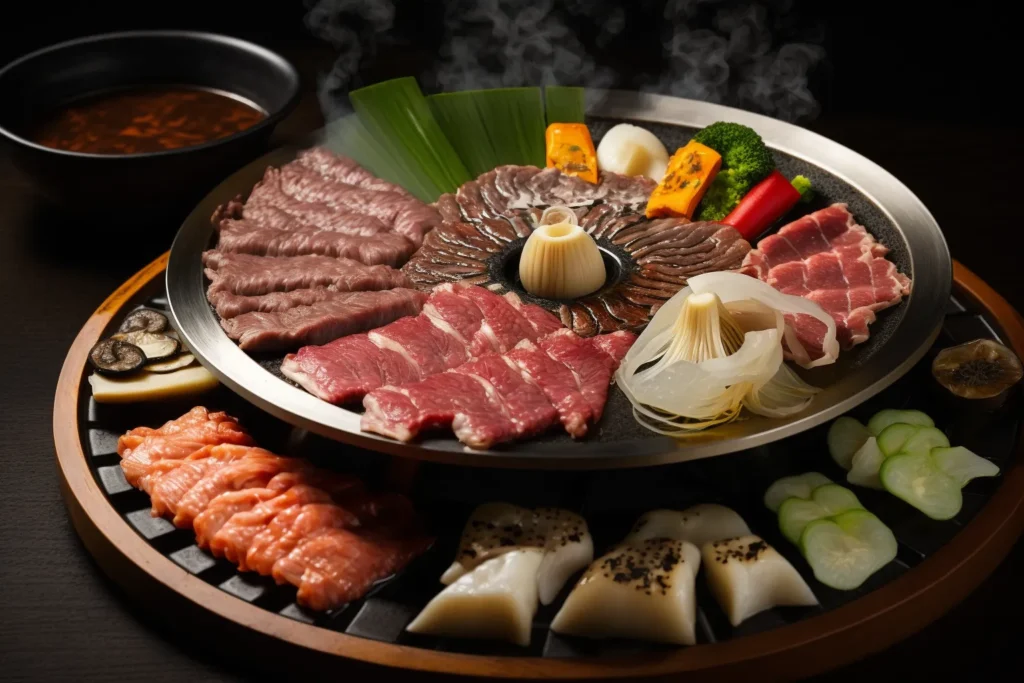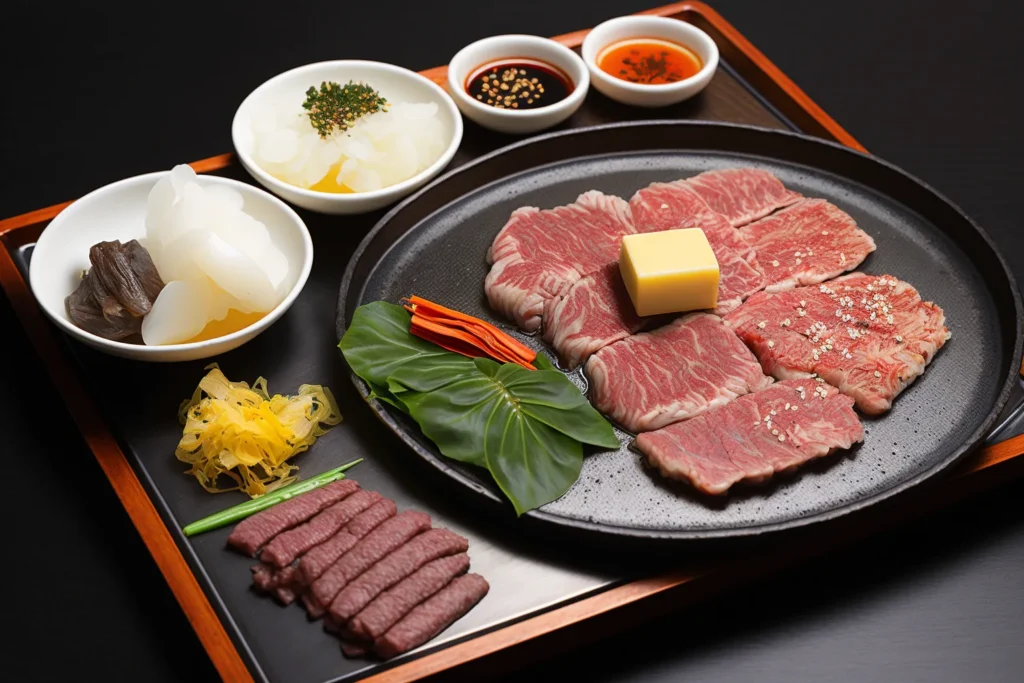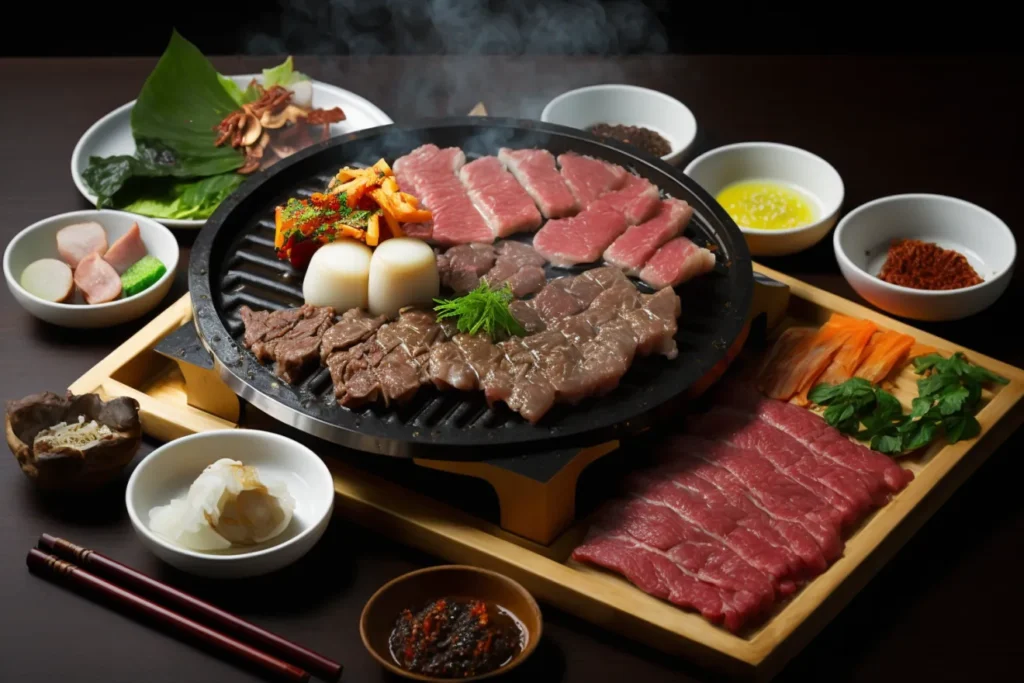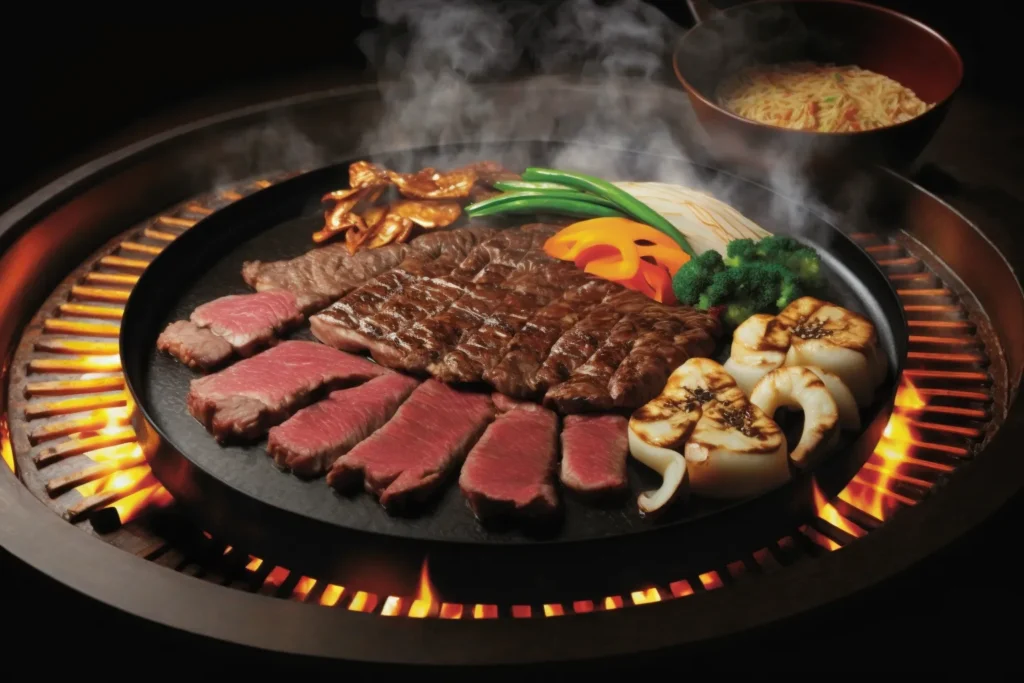
Grilling meat to perfection is an art, and few do it better than the Japanese. Yakiniku, which translates to “grilled meat,” is a beloved dish in Japan that has been enjoyed for over a century. It’s a style of barbecue that has been adapted and refined to reflect the unique culinary culture of Japan. Whether you’re a carnivore or a foodie, Yakiniku is sure to tantalize your taste buds and leave a lasting impression.
In case you’re curious, check this out for what’s the difference between yakiniku and Korean BBQ!
From Korea with love
The history of Yakiniku can be traced back to the early 20th century when it was introduced to Japan from Korea. Over the years, it has become a staple dish in Japan and is enjoyed by people of all ages. Yakiniku restaurants can be found in every corner of the country, from bustling cities to rural towns, and are a popular destination for both locals and tourists alike.
More than meat
Yakiniku is more than just a meal, it’s an experience. Diners are able to cook their own meat to their desired level of doneness, creating a personalized and interactive dining experience. The variety of cuts and marinades available make it easy to try something new every time you visit a Yakiniku restaurant. Whether you prefer your meat tender and juicy or charred and crispy, Yakiniku has something to offer everyone.

Understanding the Yakinku Japanese BBQ experience
When it comes to Yakiniku, there’s more to it than meets the eye. In Japan, there are various types of Yakiniku restaurants, each offering a unique atmosphere and dining experience. From high-end, upscale establishments to more casual and affordable options, there’s a Yakiniku restaurant to suit every taste and budget.
Dining at a Yakiniku restaurant is not just about the food, it’s also about the etiquette and customs. The traditional way of enjoying Yakiniku involves grilling bite-sized pieces of meat on a hot plate at the table and dipping them into a variety of sauces. It’s customary to take small breaks between each bite to savor the flavors and chat with your dining companions.
What to expect
The Yakiniku menu is a meat lover’s dream, with a wide range of cuts to choose from including beef, pork, chicken, and offal. The meat is typically marinated in a variety of sauces, adding layers of flavor to the dish. From sweet and savory to spicy and tangy, the possibilities are endless. Vegetables, seafood, and rice dishes are also commonly offered, making Yakiniku a well-rounded meal for all.

The Art of Meat Selection
Choosing the right cuts of meat is an important part of the Yakiniku experience. Each cut has its own unique flavor and texture, making it essential to select the right cuts to suit your taste. Whether you’re a fan of juicy ribeye or crispy pork belly, there’s something for everyone.
One of the most popular cuts of beef for Yakiniku is Kobe beef. This premium cut is known for its rich, buttery flavor and melt-in-your-mouth tenderness. It’s a treat for meat lovers, and a must-try for anyone visiting Japan. Other popular beef cuts include short rib, sirloin, and tongue.
Pork is also a staple in the Yakiniku world, with cuts such as pork belly and loin being popular choices. Chicken, offal, and seafood are also commonly offered, offering a variety of options for diners to choose from.
It’s important to remember that the quality of the meat is just as important as the cut. Yakiniku restaurants typically source their meat from local farmers, ensuring that it’s fresh and of the highest quality. The meat is then carefully prepared and marinated to bring out its natural flavors.
Whether you’re a meat purist or enjoy trying new and unique cuts, the art of meat selection is an integral part of the Yakiniku experience. So go ahead, be bold and try something new, your taste buds will thank you.

Sauces and Seasonings: The Secret to Flavor
Sauces and seasonings play a crucial role in elevating the flavors of Yakiniku. From traditional soy-based sauces to more bold and spicy options, the sauces add depth and complexity to each bite.
Soy sauce is a staple in the Yakiniku world, and is used as a dip for the grilled meat. It’s typically made with soybeans, wheat, and salt, giving it a salty and savory flavor. Ponzu, a citrus-based sauce, is another popular option and adds a tangy, bright flavor to the dish.
Garlic, sesame oil, and chili pepper are also commonly used seasonings, adding a touch of heat and depth to the meat. These seasonings can be used on their own or combined with sauces to create unique flavor profiles.
Sauces and seasonings are not just for the meat, they can also be used for dipping vegetables and seafood. From sweet and tangy to spicy and savory, the options are endless, allowing diners to customize their Yakiniku experience to their liking. The sauces and seasonings are also often homemade, providing a special touch and showcasing the care and attention that goes into each dish.

Five Yakiniku Spots to Check in Japan:
- Gyukaku, Tokyo: Gyukaku is a chain restaurant that offers a high-quality Yakiniku experience, with a wide selection of meats and a lively atmosphere. With locations throughout the city, it’s a convenient and delicious choice for Yakiniku lovers.
- Yakiniku Heaven, Osaka: This cozy eatery serves up some of the best Yakiniku in town, with juicy cuts of meat and a variety of side dishes. The friendly staff and welcoming atmosphere make it a popular spot for locals and tourists alike.
- Marbled, Tokyo: For those looking for a more upscale Yakiniku experience, Marbled is the perfect choice. The stylish and elegant atmosphere is matched by the high-quality cuts of meat and expertly crafted sauces.
- Sumibi Yakiniku Nakahara, Osaka: This traditional Yakiniku restaurant is known for its use of high-quality charcoal, which gives the meats a smoky and rich flavor. With a menu that focuses on traditional cuts and cooking methods, it’s a true taste of authentic Yakiniku.
- Wakashachi, Tokyo: This chic and modern Yakiniku restaurant is a favorite among young professionals, who flock here for the delicious meats and stylish ambiance. With a menu that features unique cuts and specialty sauces, it’s a perfect choice for those looking for a fresh take on Yakiniku.
What Kind of meat is Yakiniku?
For Yakiniku Japanese BBQ, the star of the show is the meat, which ranges from the delicate and buttery taste of beef tongue to the robust and hearty flavor of short ribs. But with so many different cuts and options, it can be hard to know where to start. Let’s explore the various types of meat that make up the diverse world of Yakiniku.
At the heart of Yakiniku lies beef, a beloved staple in Japanese cuisine. From thinly sliced sirloin to marbled ribeye, each cut offers its own unique flavor and tenderness. Pork, another popular choice, is often used in Yakiniku for its rich and hearty flavor, with cuts like belly and shoulder being particular favorites.
For a more exotic twist, there’s chicken, which is often marinated in a variety of sauces to add depth and complexity to the flavor. And for those looking for a real treat, there’s also offal, or organs, like beef tongue and tripe, which are highly prized for their delicate and distinctive tastes.

What is the difference between yakiniku and Korean BBQ?
At first glance, Yakiniku and Korean BBQ may seem similar, with both featuring thinly sliced meats grilled at the table. However, the similarities end there. Yakiniku, originating in Japan, typically focuses on high-quality cuts of beef, while Korean BBQ places an emphasis on a wider variety of meats, including pork and chicken.
Another key difference lies in the marinade. Korean BBQ often features bold and spicy sauces, while Yakiniku marinades tend to be more delicate and subtle, allowing the natural flavor of the meat to shine through.
The grilling experience is also unique to each cuisine. Korean BBQ is often cooked over charcoal, giving the meat a smoky and savory flavor, while Yakiniku is typically cooked over a gas grill, resulting in a cleaner and brighter taste.

What is the difference between yakiniku and teppanyaki?
Teppanyaki and yakiniku may both sound like mysterious foreign words, but they each have unique flavors to offer. While yakiniku grilling involves cooking thin slices of marbled beef, pork, and vegetables on a hot plate, teppanyaki is a culinary dance where the chef prepares ingredients like meats, seafood, and vegetables on a large, flat iron griddle. The ingredients in teppanyaki are sliced and diced in front of diners, creating a mesmerizing performance as the flavors sizzle and pop in a harmonious symphony of taste. In contrast, yakiniku is a more intimate dining experience where diners can savor each delicious bite at their own pace, grilled to perfection in the comfort of their own private grilling station.

Leave a Reply